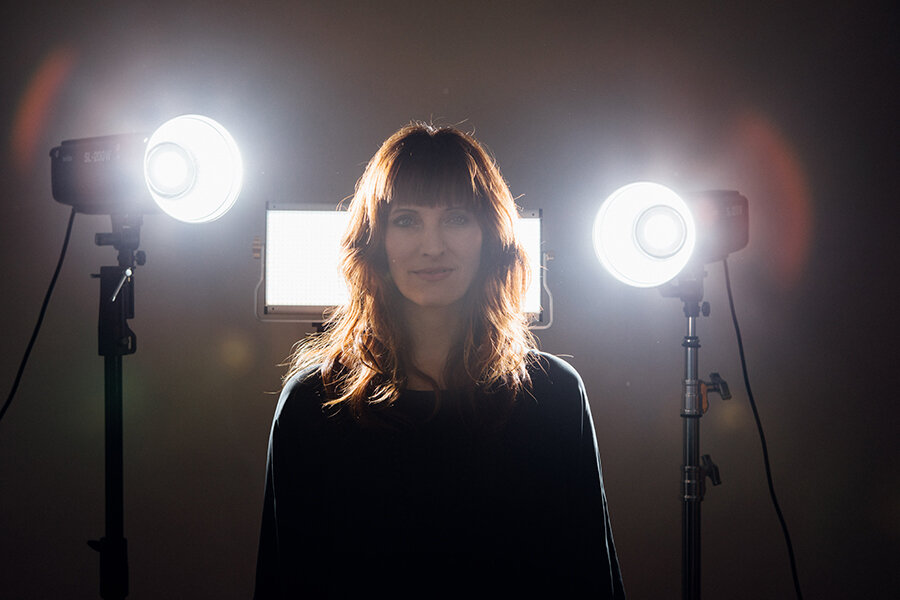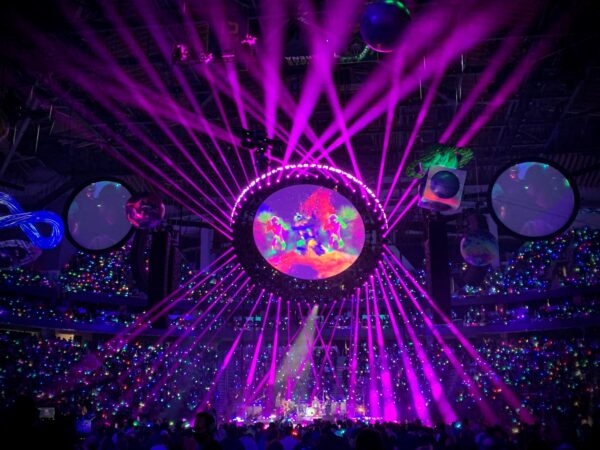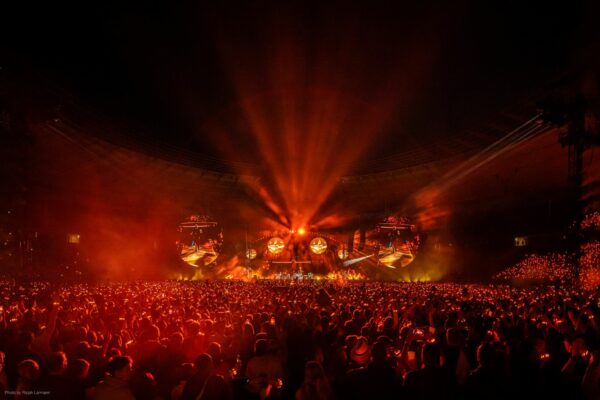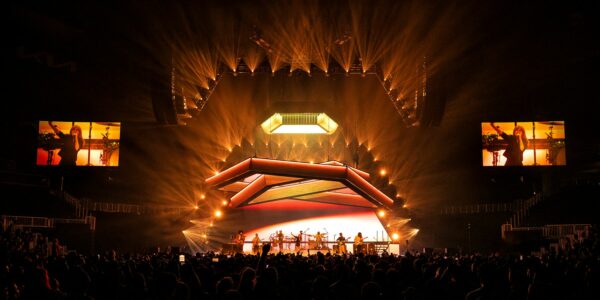
In the world of lighting design, few names resonate as powerfully as Sooner Rae Routhier. With an illustrious career adorned with accolades such as the Parnelli Award, Live Design Achievement Award, Live Production Summit Pinnacle Award, and multiple Top Dog honors, Sooner has established herself as a true luminary in the industry.
From captivating millions with her work on shows like Jimmy Fallon, The AMA’s, The Ellen Show, The Voice, and The Billboard Music Awards, to crafting unforgettable performance moments for renowned artists like Coldplay, Panic at the Disco, The Weeknd, and KISS, Sooner’s artistry knows no bounds. However, it is not just her exceptional talent that sets her apart. In 2020, when the live entertainment industry faced an unprecedented crisis due to the COVID-19 pandemic, Sooner took action. She co-founded EVEN—an organization dedicated to fostering diversity and inclusivity within the live events industry. Through outreach, training, mentorship, networking, and job placement, EVEN strives to pave the way for a more equitable future.
In an exclusive interview, we had the privilege of delving into her remarkable journey. Join us as we uncover the artistry, passion, and expertise of Sooner Routhier, both as a lighting design virtuoso and as an esteemed member of the LIT Lighting Design Awards jury.
Can you tell us a bit about how your passion for light design started?
To be honest, I fell in love with scenic design and construction before lighting! When I was in elementary school, l performed in a summer stock theater. The theater where we performed was a bike ride away from my house and I would ride over to help the scenic designer build the sets for the musical. I LOVED the maker aspect of scenic design.
When I entered high school, I took up dance. However, I was a terrible dancer! My instructor, my original mentor Cheri Skurdall, gently pushed me into tech theatre. It was then that I fell in love with lighting for music, theater, and dance. I realized that I loved the feeling of operating lighting to music. The way it reacted with sound.
I saw my first large concert when I was a senior in high school – Smashing Pumpkins Melancholy and the Infinite Sadness Tour. It was then that I knew EXACTLY what I wanted to do. The colors, beats, effects, all of it…. The way the lighting affected our emotions while listening to the Pumpkins on stage was magical.

Coldplay – George Masek
Why and how did you start work in the Entertainment Lighting industry?
My parents recognized early on that I needed to attend university closer to home. I had dreams of attending Full Sail University to study concert lighting. However, they knew that I tended to get home sick easily – VERY ironic as I’m constantly traveling. They nudged me to a smaller school in Vermont called Johnson State College. It was there that Jan Herder, the tech director of the theater, had me operating the lighting console just about every day. In the fall of my freshmen year, a band came to play in the theater and rented additional lighting and audio support from a vendor hire in New Hampshire (New England Audio Tech). The lighting person that traveled with the system was named Brian Clark. He labeled his lighting console with gel color numbers instead of the typical “red,” “blue,” “green.” I was a big nerd about lighting and had studied all the gel swatch books. When I operated the console for him and he asked me to pull up the red fader, I would illuminate the fader labeled “R27.” He was shocked at my knowledge. I asked to tag along on the next few shows. I was hired 6 months later!
How do you approach a new project? Do you have a special philosophy or steady inspiration?
The process is different for every project. However, they almost always start out with research. I work hard to figure out the past, present, and future of an artist. Inspiration comes directly from the artist. I love to tailor a production to the current direction that the artist is moving in.
If all your projects wouldn’t speak for themselves, all the awards you’ve won surely would. How does it feel to be recognized in the industry?
Very weird to be honest. I think it’s ingrained in me to be behind the scenes so being recognized can be a bit uncomfortable. It’s also incredible! I used to read Lighting Dimensions magazine when I was a kid. The first time I was interviewed for it was a dream come true!

Muse – Todd Moffses
Working in different kinds of mediums such as live stages and television studios must come with its challenges, how do you adapt your techniques and designs to these different platforms?
We try to understand what the scope of the tour will be before we put pen to paper. If the tour includes festivals, promo, etc… we try to design elements that will fit in all the mediums. Doing this allows the artist to maintain a bit of the visual identity across all shows. For example, if an artist is beginning an album cycle they might start with television promo. If this is the case, we try to design elements that can be used in the TV setting and then transition onto a large concert stage by being altered slightly.
Although this might be a difficult question to answer, what is the project you’ve enjoyed working on the most so far? Which was The One?
I don’t have a project that is “The One.” I do have an experience however! When Coldplay released their album “Everyday Life,” they did so amongst some Roman ruins in Amman Jordan. We built a concert stage amongst the ruins in the center of the city. They performed a sunrise and sunset performance followed by a full-length concert. It was the most incredible experience to be surrounded by the ruins and the local culture. We would stop at call to prayer and watch as beautiful white birds were swooping throughout the valley in the city. It was the most stunning combination of music, nature, culture, and history.

Coldplay – Ralph Larmann
After the pandemic, you partnered up with fellow designers and created EVEN. Can you tell us more about the organization and its mission?
The founders of EVEN recognized that our industry was about to lose about 20% of its work force during the pandemic. EVEN was created to try to build the work force back in a more diverse manner. We are a team of industry professionals that recognized that there is a visibility problem with our backstage industry. We are behind the scenes by design. We make the magic happen so that the artist can shine brightly on stage! We developed a program with four distinct pillars: Community Engagement, Education, Mentorship, Paid Apprenticeship Placement. The program is a pipeline from awareness to first gig.
What are some of the major inspirations you apply to your work?
I’m inspired by just about everything! Nature, store displays, galleries, architecture, fashion. It really runs the gambit. I work with a very diverse group of artists from all different genres of music and entertainment. Inspiration for projects is just as diverse!
Which advice would you give to an aspiring lighting designer that would love to follow in on your steps?
There are so many things!!
One of the biggest things that I learned early on – thankfully – was how important it is to get finances in line. This is boring business stuff! Sorry! As freelancers, we aren’t covered by 401Ks and disability insurance. It’s important to get a plan together so that you’re covered if things get challenging. I find that a lot of younger designers struggle with this in the beginning of their careers and it really messes with them later down the line.
In line with the boring business stuff is contracting and insurance. It’s so so so so important to cover yourself with these things!
Also, the ever old cliché – “never stop learning.” I find that I learn from people of all ages, those younger AND older than me! Don’t turn someone away because they are younger or have less experience then you. Always take the meeting because you never know what you could learn!

Paramore – Todd Moffses